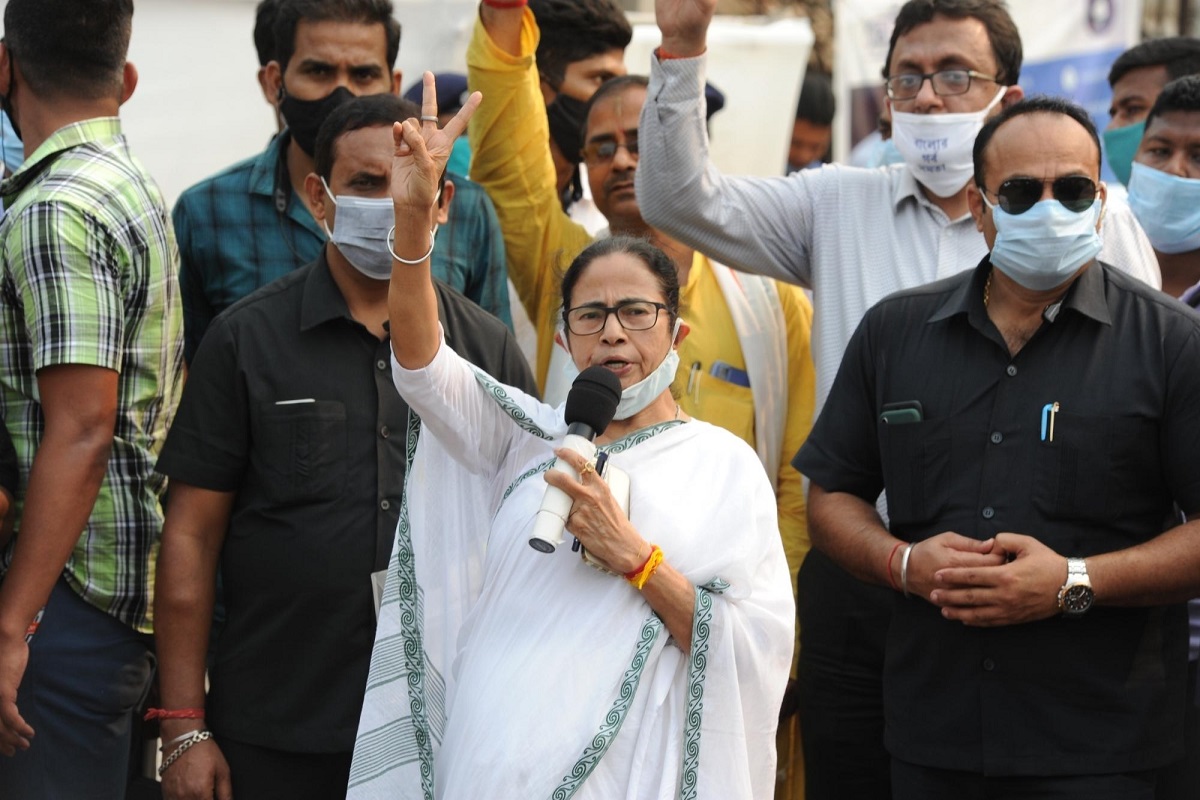Cold storage association demands storage rent rise from govt
West Bengal Cold Storage Association held their 60th annual general meeting on Wednesday.
In the days to come, this election will be analysed extensively.

(Photo: IANS)
In terms of electoral success, Mamata Banerjee has already joined the pantheon of West Bengal’s most successful post-Independence leaders, a space hitherto occupied by Dr B C Roy and Jyoti Basu. But in popular imagination, she may well have soared ahead because her party’s triumph on Sunday was in the face of odds that often seemed overwhelming, and against an opponent significantly more potent than any Roy or Basu had confronted in their third bids for power.
Confronted with a party that has the deepest pockets in India, and the will to use every trick in the political – and administrative ~ book, Miss Banerjee was able to return to power with more legislators than she had on the day elections were announced. This is a singular triumph, and one that will etch her place in the state’s history.
Advertisement
That it came on the back of a gruelling, and, in the view of some, an unnecessarily prolonged election schedule, and in the face of defections of several key lieutenants, makes it even more special. While Miss Banerjee’s governance record is not without blemish, her political savvy is matched by few and her reading of Bengal’s pulse is immaculate.
Advertisement
By reaching out to Bengali subnationalism, and appealing in a sense to the iconoclasm that marks the state, she was able to blunt the BJP’s stress on the benefits that could accrue from the same party ruling both at the Centre and in the state. For even as the BJP juggernaut threatened to crush anyone who came in its way, the party made several errors in its campaign and strategy.
First, its leaders were seen often to slight Miss Banerjee, even lampoon her; this was both unnecessary and counterproductive. When added to the size of the BJP’s mammoth campaign machinery, this had the effect of projecting a sitting Chief Minister as the underdog. Next, it failed to appreciate that it is necessary in Bengal to pay obeisance to each of the state’s icons, and not just to some.
While it sought to appropriate Subhas Chandra Bose, it did not embrace Satyajit Ray with the same fervour and appeared even to slight Amartya Sen. To compound matters it took the ill-advised step of renaming the B C Roy Institute of Medical Science and Research in Kharagpur after Syama Prasad Mookerjea.
Third, and especially in the last few phases of the campaign, it appeared to place political ambition above public health considerations more conspicuously than its opponent. Finally, while the BJP packed significant national muscle into its campaign, it was not able to project the same strength locally, and may even have faced discord within its Bengal unit over the preference given to recent entrants.
In the days to come, this election will be analysed extensively. For now, it will be enough to say that Miss Banerjee has returned to power with renewed strength, but with great challenges ahead of her. As she said on Sunday, the state faces the daunting prospect of an epidemic that is threatening to spiral out of control.
In the longer term, she must prepare to face a single Opposition party that will relentlessly attempt to build on an agenda that has seen it grow exponentially in the past few years. More than political skills, Miss Banerjee will have to display sober and focused administrative skills in her third term, even as she seeks to play the role that anti-BJP parties will expect of her nationally in the years leading up to 2024.
Advertisement